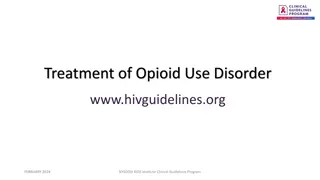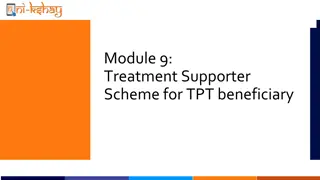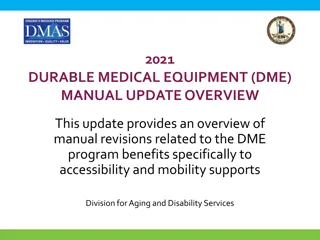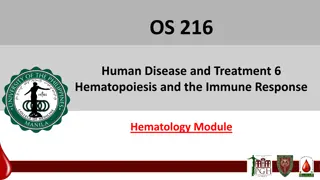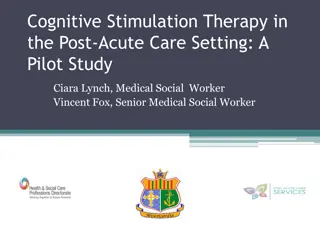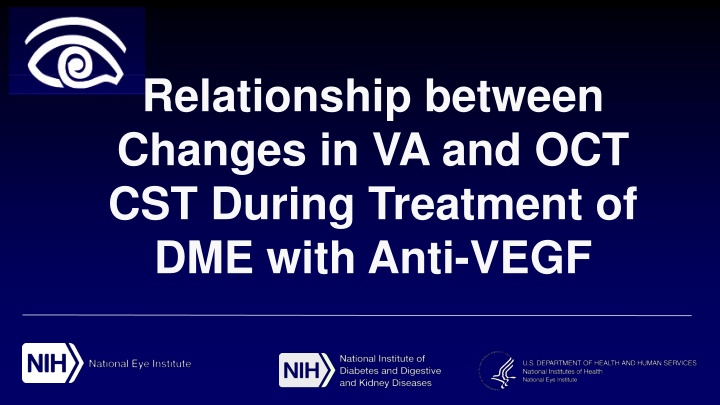
Relationship Between Changes in VA and OCT CST During DME Treatment
Changes in optical coherence tomography (OCT) central subfield thickness (CST) and visual acuity (VA) are key outcomes in diabetic macular edema (DME) treatment using anti-VEGF therapy. Explore the correlation between VA and CST changes after treatment, as studied in Protocol T with 660 participants receiving different medications.
Download Presentation

Please find below an Image/Link to download the presentation.
The content on the website is provided AS IS for your information and personal use only. It may not be sold, licensed, or shared on other websites without obtaining consent from the author. If you encounter any issues during the download, it is possible that the publisher has removed the file from their server.
You are allowed to download the files provided on this website for personal or commercial use, subject to the condition that they are used lawfully. All files are the property of their respective owners.
The content on the website is provided AS IS for your information and personal use only. It may not be sold, licensed, or shared on other websites without obtaining consent from the author.
E N D
Presentation Transcript
Relationship between Changes in VA and OCT CST During Treatment of DME with Anti-VEGF
Background Changes in optical coherence tomography (OCT) central subfield thickness (CST) and changes in visual acuity (VA) are used as the major anatomic and functional outcomes in many clinical trials for diabetic macular edema (DME). Previous studies have reported only a moderate correlation between change in VA and change in CST after laser treatment for DME However, little is known about this relationship after anti- VEGF therapy for DME 2
Correlation between VA and Center Point Thickness Protocol A 3.5 months after laser treatment for DME. 3 SOURCE: http://doi.org/10.1016/j.ophtha.2006.06.052
Correlation between Change in VA and Change in Center Point Thickness Protocol A 3.5 months after laser treatment for DME. 4 SOURCE: http://doi.org/10.1016/j.ophtha.2006.06.052
Objective To determine the relationship between changes in VA and changes in CST after anti- VEGF therapy for DME in Protocol T 5
Protocol T Methods 660 participants were randomized to receive aflibercept 2.0- mg, bevacizumab 1.25-mg or ranibizumab 0.3-mg Participants were adults and had at least one eye with DME and VA letter score of 78 through 24 (approximate Snellen equivalent 20/32-20/320) Visits were every 4 weeks during year 1 and 4 to 16 weeks during year 2, depending on treatment course Starting at the 6-month visit, focal/grid laser treatment was administered if DME persisted and was not improving
Results 7
Scatterplot of VA by CST at Baseline 0 N = 652; r = 0.36 VA at baseline (letter score) 20 (20/400) 40 (20/160) 60 (20/63) 80 (20/25) 100 250 350 450 CST at Baseline ( m) 550 650 750 850 8
Scatterplot of Changes in VA by Changes in CST at 12 Weeks 55 N = 616; r = 0.36 Change in VA at 12 Weeks (letter score) 45 35 25 15 5 -5 -15 -25 200 100 0 -100 -200 -300 -400 -500 11 Change in CST at 12 Weeks ( m)
Scatterplot of Changes in VA by Changes in CST at 12 Weeks 55 Change in VA at 12 Weeks (letter score) +2.5 letters for every 100 m decrease in CST N= 616; r = 0.36 45 But, changes in CST only explain 14% of the variation observed in changes in VA 35 25 15 *Model adjusted for treatment group 5 -5 -15 -25 200 100 0 -100 -200 -300 -400 -500 Change in CST at 12 Weeks ( m) 12
Scatterplot of Changes in VA by Changes in CST at 104 Weeks 55 N = 566; r = 0.33 Change in VA at 104 Weeks (letter score) 45 35 25 15 5 -5 -15 -25 200 100 0 -100 -200 -300 -400 -500 Change in CST at 104 Weeks ( m) 13
Scatterplot of Changes in VA by Changes in CST at 104 Weeks 55 N= 566; r = 0.33 Slope = 2.74 letters for every 100 micron decrease in CST Changes in CST explain 12% of the variation observed in changes in VA Change in VA at 104 Weeks (letter score) 45 35 25 15 *Model adjusted for treatment group 5 -5 -15 -25 200 100 0 -100 -200 -300 -400 -500 14 Change in CST at 104 Weeks ( m)
Correlation between Changes in VA and Changes in CST by Treatment Group Visit Aflibercept Bevacizumab Ranibizumab 12 Weeks 0.31 0.39 0.36 52 Weeks 0.40 0.37 0.25 104 Weeks 0.33 0.38 0.26 15
Correlation Between Changes in VA and Changes in OCT Measurements Changes in Cystoid Edema 80 N = 594 Changes in Subretinal Fluid 80 N = 588 Changes in Viisual Acuity (Letter 60 60 40 40 Score) 20 20 0 0 -20 -20 -40 -40 52 Week 52 Week Improved No Change Worsened Improved No Change Worsened 16
Summary At baseline, a moderate correlation was observed between VA and CST. Moderate correlations were observed between changes in VA and changes in CST after anti-VEGF therapy at each visit. 17
Summary However, changes in CST accounted for a small proportion (14%) of the total variation in changes in VA at each follow-up visit. For any given change in OCT CST from baseline, there was a broad range of changes in VA from baseline at 12 and 104 weeks For any given change in VA from baseline, there was a broad range of changes in in OCT CST from baseline at 12 and 104 weeks Results were similar to what was observed in Protocol A with laser treatment. 18
Take Home Messages There is only a moderate correlation between any given change in OCT CST from baseline and VA change However, OCT CST still may be the most widely used metric, apart from visual acuity, for determining if anti-VEGF therapy for DME should be given or withheld These findings do not support using change in CST in lieu of change in VA as a primary outcome in phase 3 clinical trials 19
Take Home Messages Changes in CST are not typically a reliable guide to informing a physician about VA changes for an individual eye Future research should aim to identify whether there are other predictors of change in visual acuity other than OCT CST in eyes with DME 20


